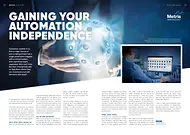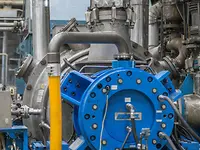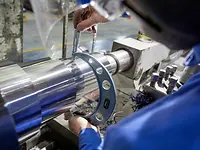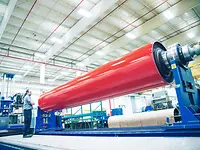Added value with the newly developed Metris All-in-one Platform .
Gaining your Automation Independence
Customers confide in us that a major source of pain is being locked into a single automation supplier with a control system that cannot be easily upgraded. Why can’t it be like their smartphone with an App Store where they can download and add functions with ease?
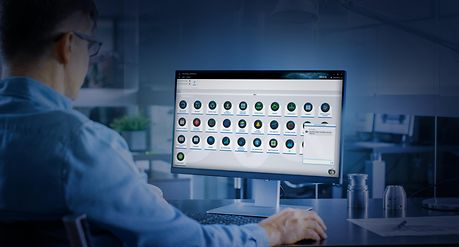
In answering that, I recall an old saying, “If the only tool you have is a hammer, everything around you looks like a nail!” In the automation business, the “hammer” is the legacy DCS the supplier sold to the mill years ago.
Any new or upgraded function has to be designed to reside in that DCS. The investment is just too large to start afresh, and there is no practical way to modernize with another supplier.
UNTIL NOW. UNTIL METRIS UX.
Metris UX was developed for today’s real world and tomorrow’s ideal world. The real world recognizes that you already have sensors, field devices, PLCs, and a DCS in place and you can’t afford to scrap them. The ideal world opens the gateway to the new or improved functionality your mill needs (simulation, condition monitoring, process control, maintenance planning, system learning, control autonomy) that is totally vendor-independent.
ALL-IN-ONE DATABASE
Metris UX can do this because of its software-based structure. In designing it, we were able to look forward instead of back at all the compatibility issues with legacy systems installed over the last 20 years. We started afresh by choosing from the latest, most powerful, and proven IT solutions.
The key strategic decision for us was to create an all-in-one database with Artificial Intelligence (AI) capabilities. This strategy is in direct contrast to classic networks found in mills that use a patchwork of protocols and house-independent (and sometimes incompatible) databases for engineering, process control, business, and maintenance activities.
Having everything in an all-in-one database allows AI to shine. It continually “learns” what questions are being asked, what information is needed (and when), and what actions are being taken to respond to changing process conditions. By recognizing patterns and identifying disturbances, it learns to predict future occurrences. The ultimate goal is to be capable of putting about 80% of standard interactions on autopilot and provide expert guidance to less experienced operators and maintenance staff for the remaining 20%.
OPEN. OPEN. OPEN.
Customers are screaming for supplier standards and open platforms – to tear down the legacy walls and make it easy to plug and play. Metris UX plugs and plays in an open platform environment very easily. It has a high-quality and widely accepted run-time kernel. Its block language is simple and powerful so that mill staff can easily add or change functions without deep programming expertise. Its architecture is in line with Time Sensitive Networking (TSN), Namur (German), and the Open Group international standards. It is “configured” rather than “programmed” so that sub-systems and functions can be easily linked together using a highly graphical, functional interface.
With Metris UX as the digital backbone, applications for plant performance and maintenance management are quickly scalable from single machines to entire smart factories due to an all-in-one database covering all areas. Using Sophia (the Metris Virtual Assistant), mill personnel can search for information to make better decisions.
There is a clear need in the pulp, paper, and power industries for vendor-independent automation solutions that will help mills foresee digitally – and ANDRITZ Automation is delivering these solutions.



